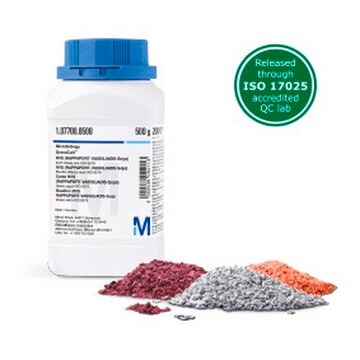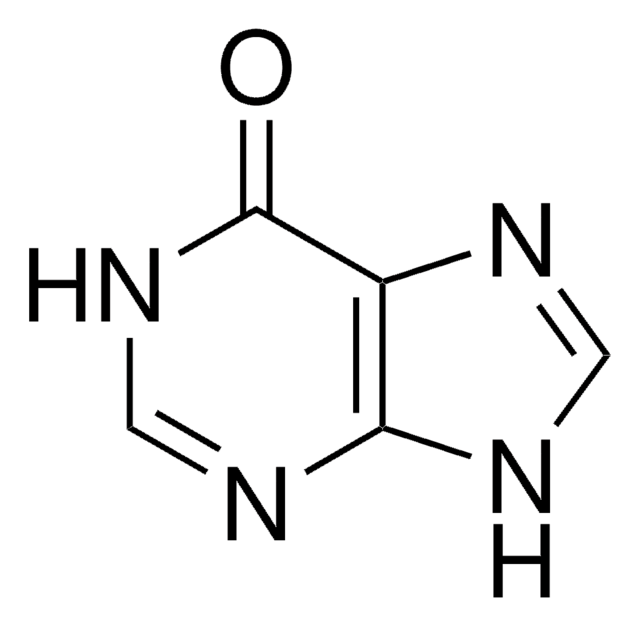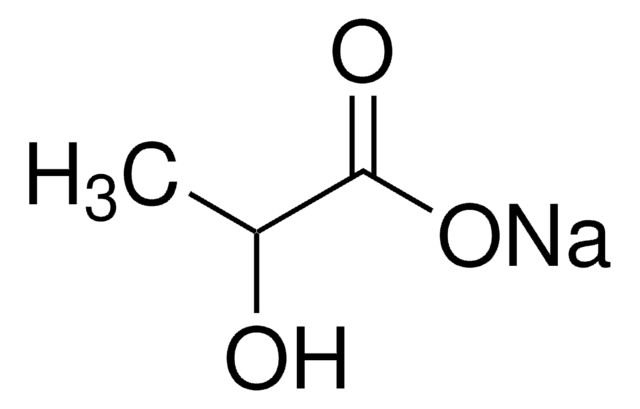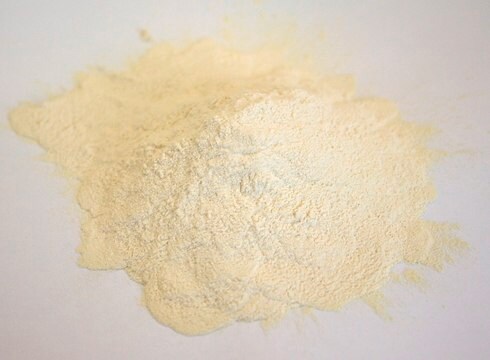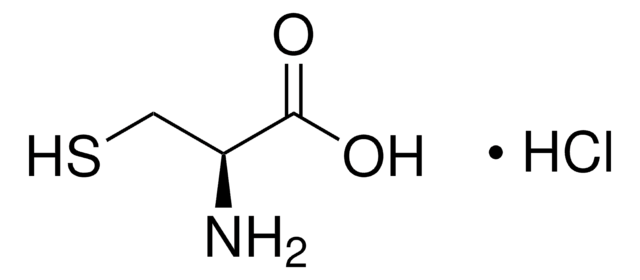1.06691
Sodium thioglycolate
suitable for microbiology
Synonyme(s) :
Sodium thioglycolate, Thio glycolic acid sodium salt, Thio glycocoll sodium salt, Mercapto acetate sodium salt,,
About This Item
Produits recommandés
Pression de vapeur
<0.1 hPa ( 25 °C)
Niveau de qualité
Forme
solid
Conditionnement
pkg of 500 g
Conditions de stockage
(Tightly closed)
pH
6.7 (20 °C, 100 g/L in H2O)
Pf
260-335 °C
Solubilité
609.1 g/L
Masse volumique apparente
200 kg/m3
Application(s)
microbiology
Température de stockage
2-8°C
InChI
1S/C2H4O2S.Na/c3-2(4)1-5;/h5H,1H2,(H,3,4);/q;+1/p-1
Clé InChI
GNBVPFITFYNRCN-UHFFFAOYSA-M
Catégories apparentées
Description générale
Application
Remarque sur l'analyse
Mention d'avertissement
Danger
Mentions de danger
Conseils de prudence
Classification des risques
Acute Tox. 3 Oral - Acute Tox. 4 Dermal - Met. Corr. 1 - Skin Sens. 1
Code de la classe de stockage
6.1C - Combustible, acute toxic Cat.3 / toxic compounds or compounds which causing chronic effects
Classe de danger pour l'eau (WGK)
WGK 1
Certificats d'analyse (COA)
Recherchez un Certificats d'analyse (COA) en saisissant le numéro de lot du produit. Les numéros de lot figurent sur l'étiquette du produit après les mots "Lot" ou "Batch".
Déjà en possession de ce produit ?
Retrouvez la documentation relative aux produits que vous avez récemment achetés dans la Bibliothèque de documents.
Les clients ont également consulté
Articles
Learn more about our culture media portfolio for microbial examination of non-sterile products, fully compliant with the harmonized Pharmacopoeia.
Notre équipe de scientifiques dispose d'une expérience dans tous les secteurs de la recherche, notamment en sciences de la vie, science des matériaux, synthèse chimique, chromatographie, analyse et dans de nombreux autres domaines..
Contacter notre Service technique




